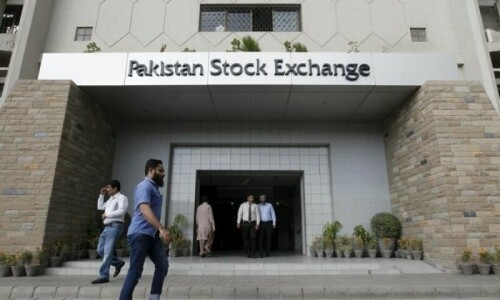THE trade ministry’s ‘plan’ to almost double exports to $60bn over the next three years is nothing more than wishful thinking. The ‘new’ target compares with the IMF projection of exports rising by 22pc to $37.2bn during the targeted period. What has changed — or might change — that makes the government think it can pull off such a feat? Is the new target backed by a solid plan or strategy?
After all, Pakistan will be required to consistently grow its foreign sales by nearly 25-30pc a year to double its export earnings in three years. This kind of growth entails vast private investments both in industry and agriculture to boost productivity, as well as diversify exports. There is no evidence of any such thing happening in the foreseeable future, though. It is, therefore, safe to assume that this fantastic target will remain elusive — just like previous targets, which had aimed to raise the country’s export revenues to $100bn.
Stagnating exports have always been a source of concern for Pakistan’s economy. Over the last several decades, exports have mostly been marked by marginal gains in their (dollar) value during global commodity super cycles, plummeting quantities and falling global market share, thus posing a major challenge to sustainable economic growth.
Exporters often blame high energy prices and shortages, fluctuations in global demand, domestic policy shifts, etc, for their poor performance, despite living off significant subsidies, as well as tax and cash rebates, at the expense of the people. There is no denying the fact that these constraints exist and impede export development. However, their impact on export performance is clearly exaggerated by the powerful textile lobby that wants to retain its benefits.
The exporters’ failure to diversify their goods, improve productivity, upgrade technology, explore new markets, and move up the value-addition ladder to become globally competitive is as much responsible for Pakistan’s chronic inability to export to its full potential as any other factor. Plummeting exports as a ratio of GDP is one of the major reasons driving the current economic slowdown and the balance-of-payments crisis.
Pakistan needs to increase exports to bridge its trade deficit, improve its external sector and finance growth. But one cannot raise exports by coming up with a target that is not backed by a solid plan to increase investment and productivity.
Published in Dawn, July 17th, 2024














































Dear visitor, the comments section is undergoing an overhaul and will return soon.